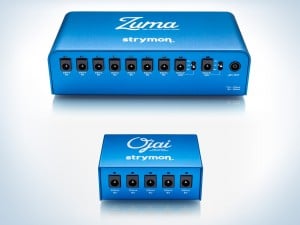
Introducing Zuma and Ojai – Pedal Power Supplies
EDIT: Zuma and Ojai available now! Buy Zuma ($249) | Buy Ojai ($149) We hope 2016 has been great for you so far. It’s been
Free US Shipping On Orders Over $49
Easy 30-Day Returns
Financing Available Through ![]()
In addition to being a co-founder of Strymon, Gregg Stock is the man behind the analog circuit design in every Strymon product. Recently, he was kind enough to sit down for an interview with me. You’ll see that I had a chance to learn a lot about his background and the life experiences that lead him to where he is today, while also learning a little about electronics from him along the way.
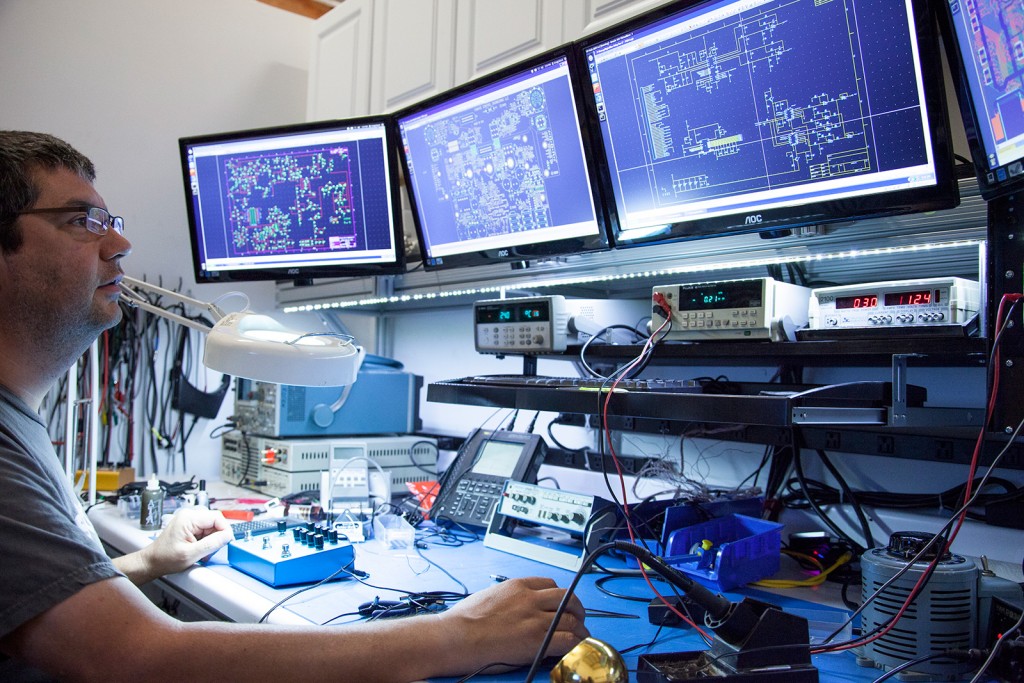
Where do you come from?
Well, I grew up in the Seattle area. Started playing guitar when I was about 15 or so. Mostly interested in sports before that. Actually, some trivia: I played all-star baseball with Michael Wilton of Queensrÿche.
Oh wow!
He was the best player in the league. He was a great baseball player until thirteen, and then he couldn’t hit a curve ball, and sort of that was that, but by the time he’d started playing guitar as well.
Let’s see, so, I was really not focused at all. Engineering was the last thing I saw myself doing, at the point at which I started playing guitar. I ended up dropping out of school at about 10th grade. Somewhere, I just sort of faded out [of school], and got a job teaching guitar at a music store in Renton. Eventually I built up my students to where I had 40 to 50 students a week, so that was kind of a full-time job.
That’s Renton, Washington?
Yeah, it’s just a little bit South of Seattle, Bellevue area. I got married and was just teaching guitar. I started playing around getting more into the internals of my amps. This was in the days of racks, and I had some rack equipment and wanted to get kind of a Bradshaw-ish switching system going. So I started looking at books for logic circuits and reading about electronics. I realized I knew absolutely nothing, and anytime I’d see an equation or something I’d just stop because I had no idea what that even meant. So I was realizing that if I really wanted to do anything with this, I would need some additional education.
So you you started digging into electronics because you wanted to make something for yourself, to fill a need…
Yeah.
You wanted to make a switching system for your own pedals basically?
Right, and to be able to do my own amp mods. I would take my amps into… I think it was actually Mike Lowell, who’s now big in building custom bass guitars. It was him and couple other guys that had a little repair shop and you’d bring your amp or your guitar in, and they would do your mods for you. I also actually went out to Floyd Rose’s house – tiny little house in West Seattle, to get one of the first Floyd Rose systems. At the time he had Steve Lukather’s guitar, and he had one of Eddie Van Halen’s guitars – that Eddie hadn’t played yet, because it was coming from Boogie Bodies. I got to play one of those before Eddie, and that was pretty cool [laughs]. But yeah, I just got more interested in wanting to do my own amp mods and build a switching system and understand more about what was going on, and I was also 25 years old and I had pretty much as many students as you could practically teach in a week.
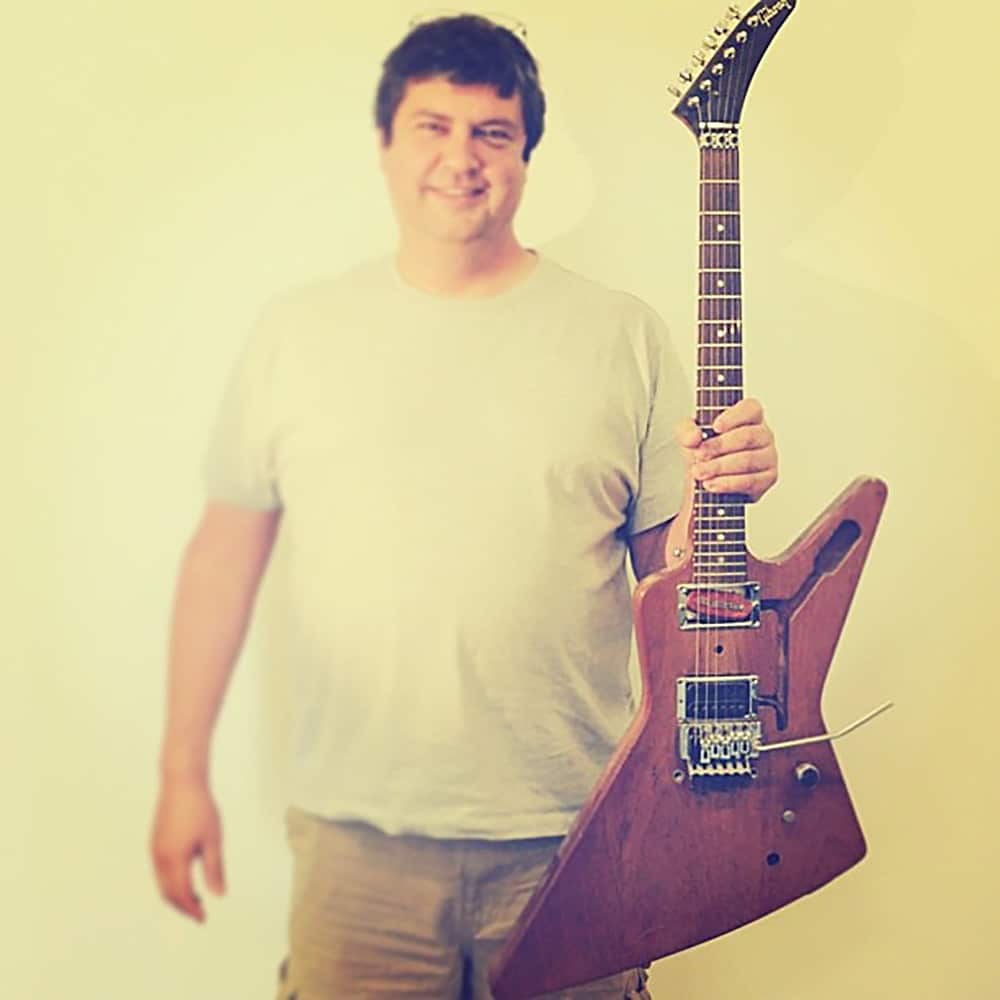 Gregg with one of his first guitars, a 1976 Gibson Explorer
Gregg with one of his first guitars, a 1976 Gibson Explorer
So you’d been building up a guitar lesson clientele since the age of…
18 I think. Yeah, that was my job. I was playing in bands and stuff for fun, but teaching guitar was my job. It kinda felt like: I’m 25 and there isn’t like a lot of career growth, and the big thing was “hey you gotta move to L.A.” This was in the early ’80s when the whole metal thing was going crazy down in Southern California. But the guitar teaching clientele wasn’t portable. So engineering seemed like something I could have that could be portable. So I went back to community college, actually with my wife. We were in the same class: college algebra. The first two weeks I was just completely clueless, I had no idea what was going on. But then I was so determined to do it, it finally clicked. I started to kind of piece it together. So eventually I worked through and got a Double E degree. By this time, I’ve got two kids and music is like, you know, long gone. The idea that I was just gonna go get some training and then move to L.A and play in a band: No, that part’s over. And so I got a job at Boeing! And I guess the irony is that my wife’s dad had been a Boeing engineer for 35 years.
So you said Double E degree, electrical engineering…
BSEE. Yeah, I got a BSEE from the University of Washington, after the two years at community college.
You said you’d dropped out of high school. Did you get a GED or something?
Nope, nope, I got a BSEE without a GED!
How about that!
Well, the irony was that the guideline to get into the university where you had to have high school or equivalent, well all of my college classes that counted towards my Double E degree also counted towards the high school equivalent. So basically a quarter of college English was worth a year of high school English. So I basically just did all of my prerequisites, so I was ready to go into the Engineering Department as a Junior and had finished all of my calculus and physics and chemistry and such (and English) and basically an equivalent of high school in those two years of community college.
So you were a Boeing Engineer?
Yep, I was a Boeing engineer. Worked on some stuff on the 737. Specifically a non-contact proximity sensor. It was a pretty interesting project. Did that for a couple of years. And then they were building the triple 7 and their power supply group was kinda tied up doing that, and so I got to do this power supply on my own with a lot of freedom, because they would normally kind of control the designs or whatever, and I did something probably a little more radical than I should have, but it was kind of cool and I learned a lot doing it.
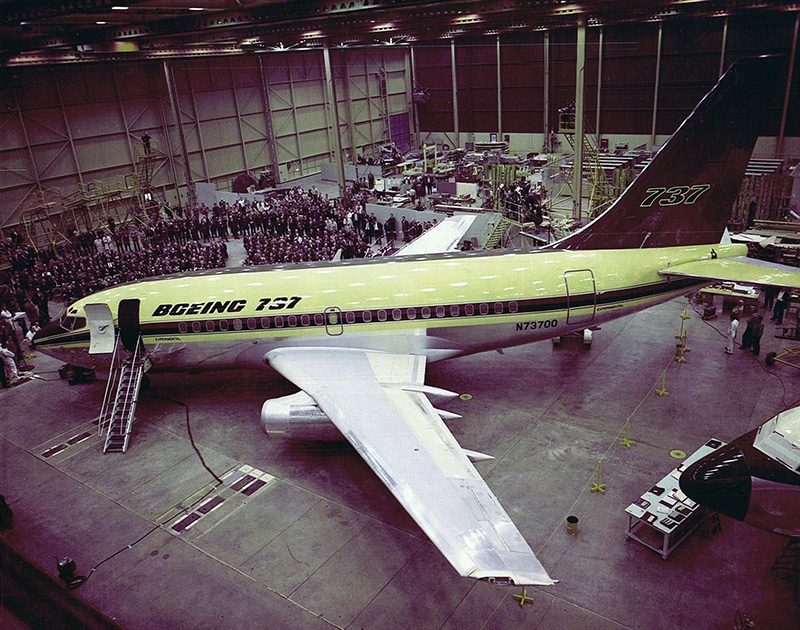 Photo by Gordon Werner
Photo by Gordon Werner
So this is like four years with Boeing, and then I got a recruiting call from somebody at Power-One. And five years at Boeing is really kind of a turning point because you start to get completely vested in retirement programs. It gets harder and harder to leave if you get much past five years. My wife and I had both grown up in Seattle, and I don’t know, it was crazy: we took five kids, the oldest was five, the youngest was two weeks old. We moved ’em all down to Southern California. We started looking for a house.
And that was because of Power-One?
It wasn’t quite the dot com boom yet, but there was a lot of recruiting and a lot of growth. So, I guess from a technical standpoint both those jobs [Boeing and Power-One] were phenomenal in that you had a lot of senior engineers who really knew what they were doing. And you could kinda walk around and talk to them about what they were doing, pick their brains, and sort of glean their experience. And also, there’s one common thread between airplanes and power supplies: if you don’t get it right, people can die. So, there’s a certain discipline and safety regulations, which at first was very frustrating, because you just wanna go in and do things. But there are processes and procedures and a very structured environment. But actually that was good. I’d say that the aerospace environment can stifle creativity, but at the same time it does teach you engineering discipline that you don’t always see if you’re just winging it. With music products some people might say it’s ok if four or five percent of the amps blow up [laughs]. But, you know, it’s not ok if four or five percent of the airplanes fall out of the sky.
Good point! By the way, you mentioned you made a power supply for Boeing, and that was one of the last things that you did for them…
Right, that power supply was part of a system, really sort of the next generation of the same proximity sensor system that we had developed previously. This was when they were doing the next generation of 737s. I was sort of like the “it” guy for doing all the EMI (electro-magnetic interference) testing, and Boeing has a little bit different EMI requirements and some kind of strange tests that are very specific to airplanes. But you know, that was a huge learning experience trying to understand what’s going on with RF [radio frequency] energy.
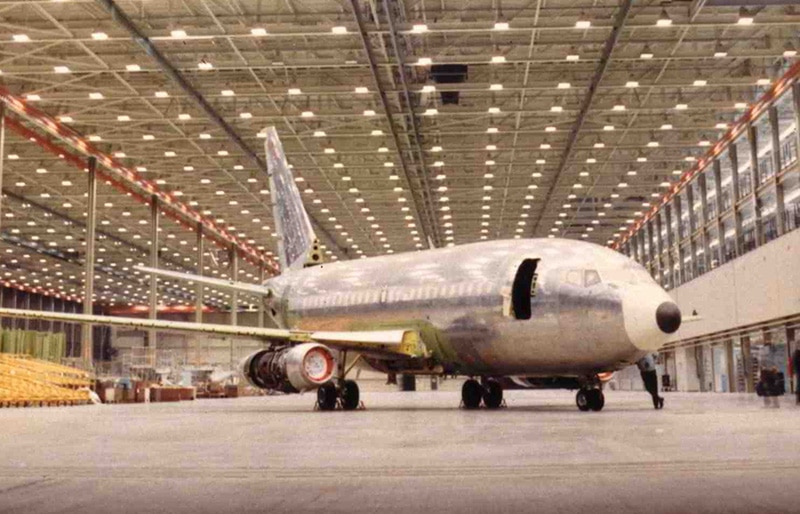 Photo by Gordon Werner
Photo by Gordon Werner
I assume that that experience also informs what you do now. I mean, certainly unwanted noise is always an issue.
Absolutely. After Boeing and Power-One, I ended up doing some consulting for QSC. Eric Mendenhall was their power supply guy but he was busy doing this monster 9000 watt thing, so they needed somebody else to work on the power supply for the PLX series of amps, along with Pat Quilter. I had a very good foundation for audio engineering but not much specific experience. At that time, QSC was one of the few companies that had tried to put a switching power supply together with an audio amplifier. The requirements are so much different than the commercial power supply industry. It was a huge learning experience, because for the most part with a commercial power supply you need to put out full power all the time. But if you’re powering an audio amplifier you may only need to put out a tenth of the peak power on a continuous basis. So you have this huge peak demand and a fairly low average demand. So the design is a much different philosophy than a commercial power supply. Then also you have the noise considerations, and you know, by its nature a switching power supply is really noisy. Well how do you keep that noise out of the audio? I think that’s what started my creeping back towards the audio stuff that I had kinda forgotten about.
So I did the consulting for QSC, I did two years at Power-One – and Alesis had an opening. They wanted to do a class-D amplifier. I was thinking, this is gonna be awesome! A class-D amplifier is basically a switching power supply that puts out audio instead of DC. Perfect. You know, I have good background in switching power supplies, have some good analog experience, I love audio. Let’s do it. I started at Alesis. And then they put the amplifier on hold. I never got to do the class-D amplifier at Alesis. We ended up working on the DG8 (digital piano), which has a switching power supply and an amplifier. We did the M-1 active [powered studio monitor]. A handful of other things. So I was at Alesis for two years, and headed over to Line 6 about the same time that Dave [Fruehling] did.
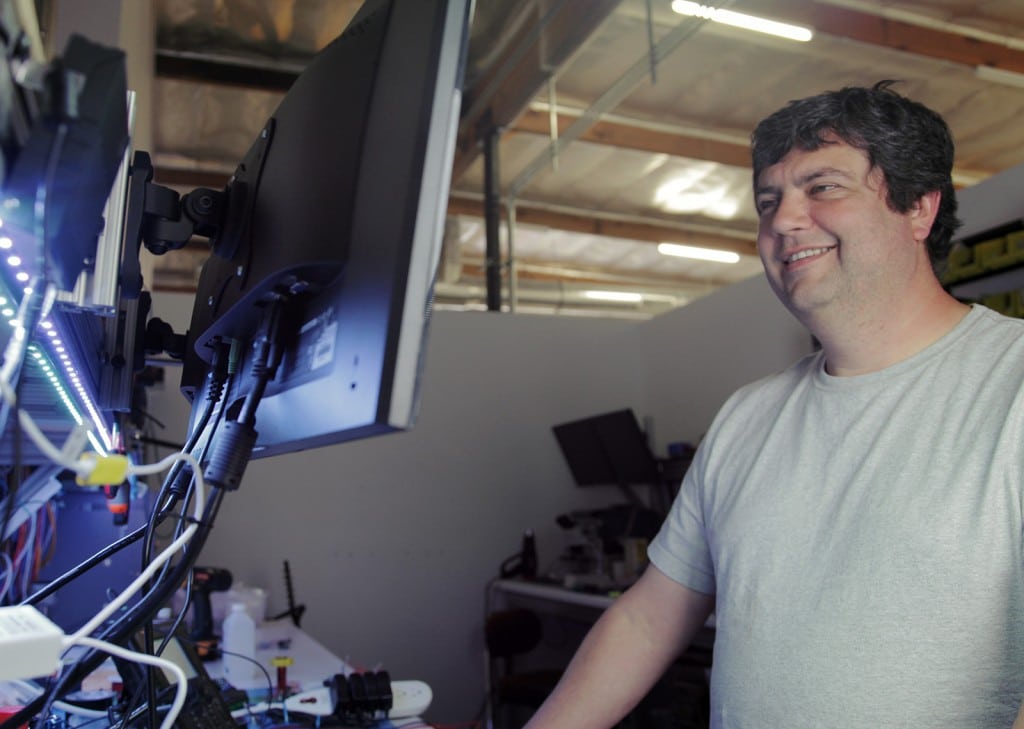
What were you doing at Line 6?
Well, we did the last Flextone HD. And that was actually pretty cool. We did a switching power supply and a class-H amplifier.
I don’t even know what a class-H amplifier is.
Well, an amplifier has power rails, like DC power rails. And the audio can kinda go up to but not over the power rails. And the amount of heat dissipated in the power transistors depends on how high those rails are. So if you want put out a lot of power you gotta have high rails. And while you’re putting out a low level signal you’re actually burning a lot of power. So you need bigger heat sinks and such. And one of the goals was to get rid of the fans that were on the back of the original Flextone HD. So what a class-H, or sometimes they call it class-G, amplifier does is that while your signal level is low, your rails are low, and then when you detect a higher signal level you have sort of another set of rails that are sitting there waiting to be used, so that you expand as the audio needs it and then switch back down. So you get a pretty big boost in efficiency. That’s how QSC does their amplifiers.
Well there was another thing that it bought us, besides efficiency. We also wanted to be able to mimic a tube amp with doing constant power into 4, 8 and 16 ohms. With a tube amp it’s fairly straightforward. You have a transformer with different windings, and you just change the winding taps through the little switch in the back. So what we did was, the switching power supply could switch the rails so when you went to 4, 8 and 16 0hms, the power supply would change the rail voltages. That, together with the class-H amplifier you could have a 4, 8 or a 16 ohm load and you could get a constant amount of power (100 watts) into all those loads. Typically if you wanted to get 100 watts into 16 ohms, you’d wind up with like 300 or 400 watts into 4 ohms, which really isn’t what you want. So that was the first project. Then the Vetta came along. I was also the engineering manager for sort of the analog group if you will. We did the Vetta which had a similar power supply and amplifier. We worked on some other stuff too, but the Vetta took a long time. We also did the Variax that Pete [Celi] and Dave worked on.
So at this point it wasn’t just power sections that you were working on. You had eyes on the whole analog signal path.
Right. I was doing some design work but also directing a handful of engineers to help them with the specific designs. So at Line 6 there was the idea of this digital system where you’re coming into codec [coder-decoder] doing your DSP, and processing it. That’s where I really kind of got to understand that sort of system. Getting high-quality audio to coexist with this DSP system is really where all my previous analog, switching power supply experience, EMI experience, all the audio experience came together, because it’s much more demanding than you might think, in that your DSP system is generating noise that if almost any of it gets in – and we’re talking like nanovolts of it, your ear can pick it up because your ear is so sensitive to especially a 1 kHz or 2 kHz tone. You can imagine that something’s happening at a 2 kHz rate inside this DSP system. Well, if any of those currents can find a little path into your analog, then you hear this little whistling tone that we’ve taken great care to eliminate and get down to the theoretical maximums of the parts that we’re using.
So where did you go from there?
Well, I’d known Lucian Tu at Line 6. He designed their DL4 chassis, GuitarPort chassis, among others. I thought, well, let’s try something different since I don’t know anything about art, or marketing, or chassis, or that kind of stuff. I can make the circuits inside. So I said, “Alright, hey Lucian, let’s make a guitar pedal.” And that was the start of Damage Control. We’d just started and were probably three or four weeks into working on what would become the Demonizer, and Dave Fruehling who’s at Line 6 was kind of in the process of leaving. We said, “Hey Dave, we’re doing this thing. Come check it out.” So he signed on pretty quickly. Dave and Pete had been working on the Variax together for a couple years and that had wrapped up, so we had Pete over for lunch to say, “Hey Pete check this out – see what we’ve got going.”
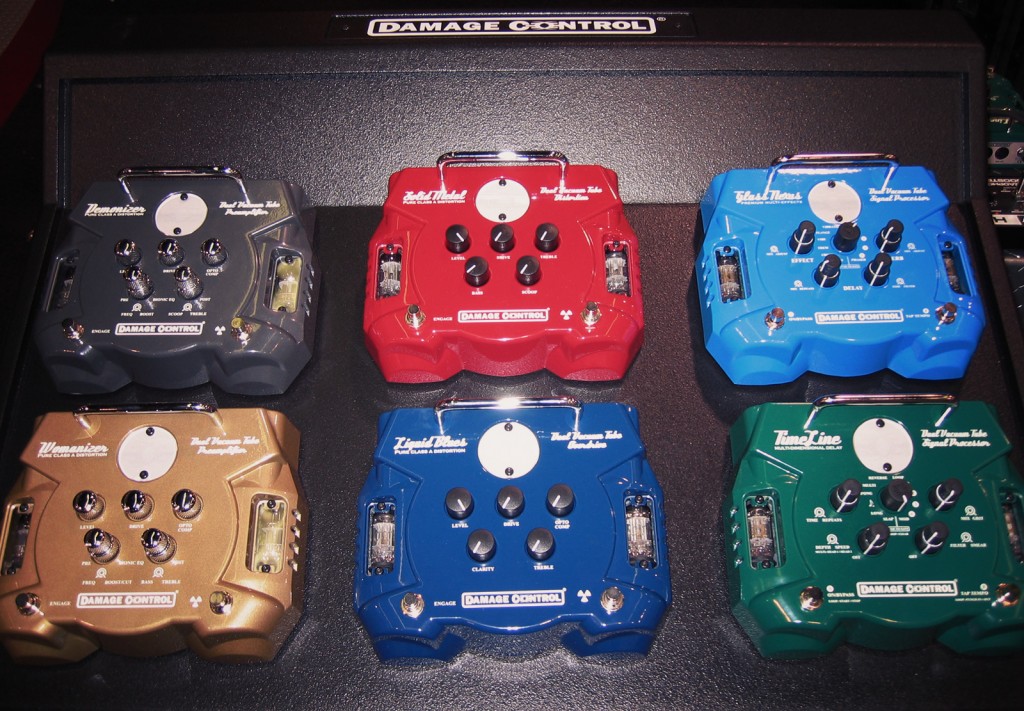
So now we’re getting into Damage Control and Strymon.
Yes. Within a couple of months it was the four of us as Damage Control. So we did the Demonizer, the Womanizer, Liquid Blues, Solid Metal, TimeLine, Glass Nexus. Ultimately, sales didn’t quite take off as we had hoped, even though the pedals themselves were well-praised. To pay the bills we found ourselves focusing a bit more on consulting gigs. Though in our afforded time we continued to chip away at a brand new set of product designs. Strymon pedals were sort of the next generation of Damage Control. We had been working on what are now the Timeline, blueSky, Brigadier, Ola, and Orbit. We pretty much had those designed and were looking to release them as the next generation of products. In 2009 we decided it was time to make this a fresh start, and fully recommit to designing and building our own gear.
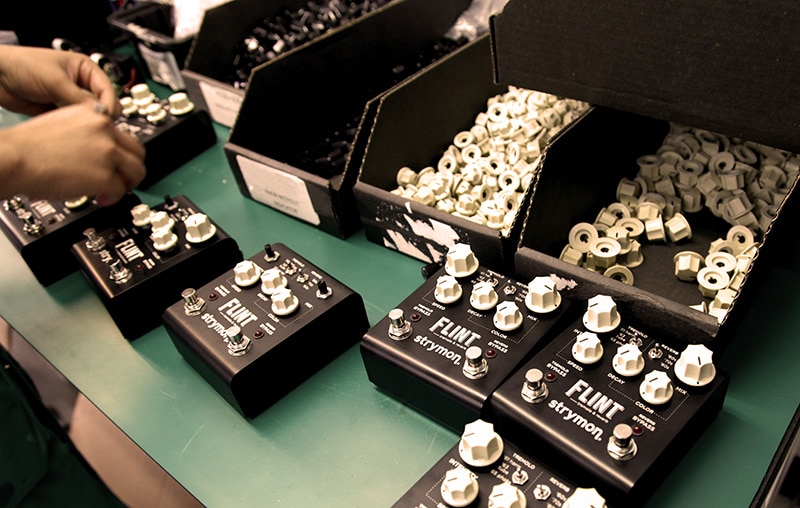
Can you talk about your philosophy behind your design work. What do you shoot for? What are you trying to achieve and produce?
Well, you know, I think there’s a saying: “The analog designer’s skill is inversely proportional to the number of trim pots that they have in their circuit.” Meaning, you have a goal of what you’re trying to accomplish as far as getting a signal from in to out with some sort of processing in between. And you want the highest performance and you want it repeatably manufacturable without somebody having to dial it in just because you didn’t understand how the components worked, and you made your circuit depend on things that weren’t well-controlled or that varied over temperature. So it’s a matter of understanding what the impact each one of your components has on the variability. It’s one thing to get one to work, now you want to repeat that. And how you design it, depends on the repeatability, over component variation, over temperature variation for any one component. All the different things that are gonna vary, you want your circuit to handle gracefully.
I had never heard that saying before, but it totally makes sense to me. It’s referring to internal screwdriver-adjustable trim potentiometers where someone on the assembly line is like “ok, I gotta make this unit go to spec, so I have to adjust five different things,” rather than just having the circuit work every time.
Exactly. Right. Because a better design will have all that taken into account. In the audio industry there’s a lot of focus on the components and the quality of the components. And that’s something where I think that science and engineering help you, in understanding what are the critical components. When do you really need to spend some money on a nice component, and when are you just fooling yourself and not really adding any value for the customer and for the circuit by putting more money into a particular component, because if you design it right it doesn’t matter. You know that you can use a lower cost component without impacting the quality. I don’t think we ever compromise. Like if I’m gonna build one for me and I don’t care how much it costs, there isn’t anything I would really do differently. The one that you’re getting is the one that I want. There isn’t any sort of a gold version of anything we do.
I think whenever we’re listening to something, the fundamental thing is I don’t know what your ears hear. So there’s no definitive right or wrong. We can make measurements and such, but I think some engineers don’t give musicians enough credit for their ability to discern. Maybe those engineers don’t understand how good a musician’s ear can be at hearing very small differences. And I think non-engineers or musicians can put a lot more credence into sort of voodoo, magic components and this or that. I’m not gonna accept that there’s any sort of magic. There may be science that you don’t understand, but at some level there is a measurement that you can make. There are quantifiable ways to understand the things that people hear. It may push your understanding of the knowledge or the test equipment or whatever. But there isn’t any true magic in any particular design or sound or components. You may not understand all of it, but it’s understandable at some point.
So the stuff that feels like magic or that just sounds really, really good you can actually figure out scientifically…
If there really is a difference.
If there’s a difference, right.
Yes, and that’s where you have to be aware of listener expectation or experimenter expectation. When you just look at a Fender amp or a Marshall amp you’ve already decided how it sounds to a certain extent. For the most part we’re looking for things to confirm our belief, what we already believe to be true. So setting up a real double-blind listening test is next to impossible. So we’re stuck with this thing where everything we listen to, we have a preconceived notion about what we want it to sound like, or what it’s going to sound like. And then, for the most part we just confirm what we already believe without really making an objective evaluation.
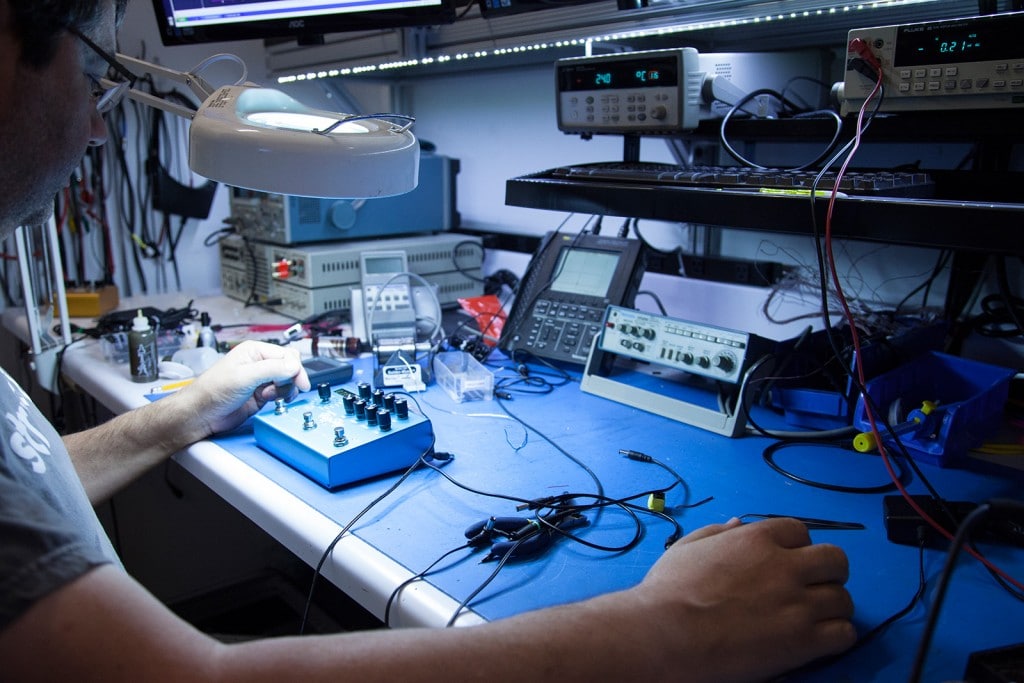
As far as what can be measured, would you say that if it’s measurable, it can be emulated?
Well, yes it is, but you have to know where you’re starting. And that’s some of the stuff that we hope to do in the future. There’s an interaction with your guitar and the front end of whatever you’re playing with that is not emulatable in software. You can’t – it’s physically interacting with your pickup. There are things going on that you can make some assumptions about and guess about, but you can’t know what’s going on with the pickup. So yes and no. There’s a point at which yes, you can emulate everything that’s going on. But there are some things going on at the edges at both the input and the output that can happen that you won’t capture.
Harmonic feedback is probably an example, right?
Sure. Yeah, I mean if you’re getting sound waves vibrating your strings. That’s part of playing really loud. You’re getting some of that fatness and sustain, and even the whole Fletcher-Munson part of your hearing, where if you play something loud it doesn’t have the same perceived frequency response as your perceived frequency response of something that’s quiet.
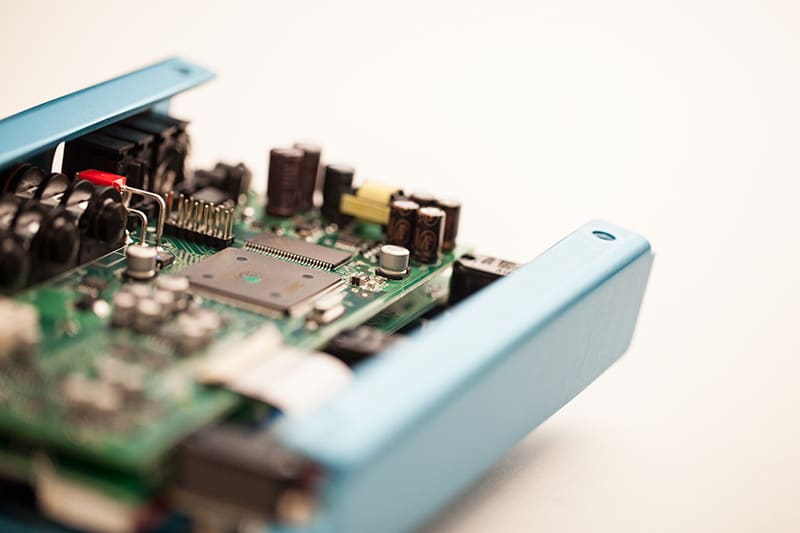
What are some other issues you’ve had to overcome on the analog side?
Well, one area that I think we’ve done a good job with is the total power consumption. To get to 200 milliamps or 250 milliamps or whatever our spec is, from 9 volts. There’s multiple switching power supplies to increase the efficiency to be able to run off of a fairly modest amount of power. I mean the Damage Control pedals, the digital ones, took almost 20 watts. Now they had some tubes in there. But Strymon pedals are under 2 watts. For what we’re doing, for a full SHARC DSP that’s drawing 300 milliamps from its core. You know if you were to do all linear regulators we’d be at like half an amp or something, with the total.
So it’s cool to have lower power consumption, so if you have a bunch of pedals you can use them with your multi-pedal power supply.
Right, right. You don’t need to have our wall wart. People don’t really like to use the wall warts. They want to have these integrated systems. We’re really think our Zuma and Ojai power supplies will solve all the problems people have with powering their pedalboards. You’ll be able to power anything anywhere.
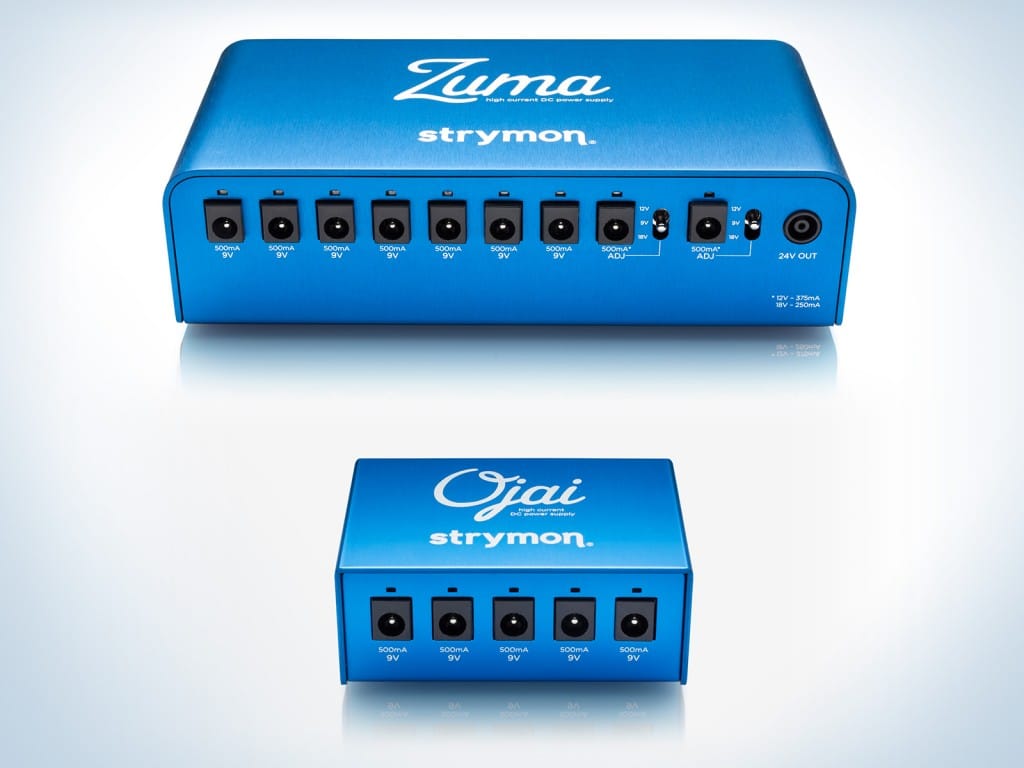
You know I really started getting to know this company after I started doing work for you guys. So I interviewed Pete and Jorge, and now you, and I’ve been really impressed by what I learned in the interviews about the kind of goals that you shoot for. Jorge told me about the fact that your pedal failure rate is only about a half of a percent. And it just seems just everywhere along the line you guys aim so high. Like you said, there are no gold versions because the version you make is the version that you want for yourself.
[Laughs] Yeah, well even in the manufacturing we do 100% test. And they’re audio tested. We have an Audio Precision that does frequency response, noise, all the goodies. We know for sure when we put it in the box, it works to our specs.
Subscribe to our newsletter to be the first to hear about new Strymon products, artist features, and behind the scenes content!

EDIT: Zuma and Ojai available now! Buy Zuma ($249) | Buy Ojai ($149) We hope 2016 has been great for you so far. It’s been
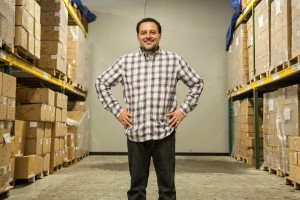
Recently I had an opportunity to talk with Jorge Aguila – Senior Manufacturing Engineer at Strymon. Jorge is a man who wears many hats! In

Strymon co-founder Pete Celi is responsible for the sound design and DSP algorithm creation for all the Strymon pedals that use DSP. Recently I had the
5 Responses
Soy de Buenos Aires, Argentina, valoro mucho el resultado de vuestros productos, amaria realmente obtener Zuma and BigSky asi como tambien informacion y alguna prenda merchandaising como alguna t shirt o gorra. Desde ya muy agradecido. Felicitaciones por la excelencia de vuestros productos.
Saludos cordiales.
Gustavo
I’ve met Gregg (and Pete) several times at the Namm shows in Anaheim. I’m also a owner of an ElCap (v2) and Flint, soon the Ojai
I’ve gigged my Strymon pedals hard…they never fail to perform
After reading the interview with Gregg, I knew there was a reason I liked these guys so much!
Keep up the awesome work!
Warmest regards,
Michael
Very nice interview. Greg is one smart dude. I love Strymon pedals and use
the Timeline. Looking forward to getting the Ojai when it comes out.
All the Best!
Barry
Love your guys. The sonics of your pedals are superb and if I was a wealthy man you’d find my pedal board rammed full of your gear. I’ll enter your new competition and see if I can get my Strymon collection started. Keep up the good work guys.x
Well, when you add Strymon pedals to your sound, is like fall in love on your first time.
These products are really the best on the market. After you try one, I guarantee you will change all your pedals to Strymon line. Anyways that what has happened to me…
Thanks to bill a great product and contribute to the world of music with a specify and unique sound for all guitarist.
I will continue promoting Strymon products all day long.
From Montreal Canada